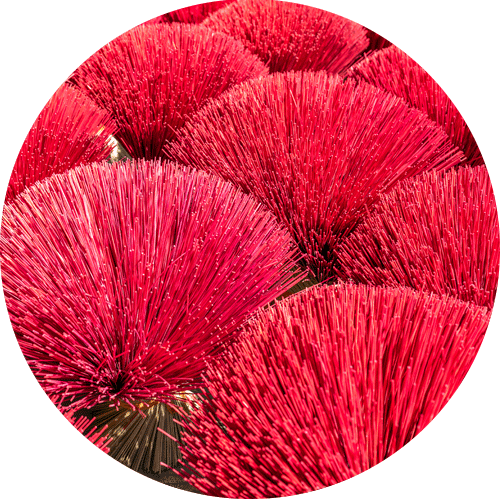Synesthesia is a fascinating neurological phenomenon in which the senses interact. Instead of functioning separately, as is normally the case, people with synesthesia experience multiple sensory activation to a single stimulus. For example, they may “see” colors when listening to music, “taste” words or “feel” shapes when hearing sounds. This experience is not a metaphor or a poetic device, but a real, constant and coherent perception for those who live with it every day.
From a neurological perspective, synesthesia is explained by unusual connectivity between the regions of the brain responsible for processing different types of sensory stimuli. In some cases, these cross-connections can allow, for example, a scent to trigger a visual response. Although there is still no absolute consensus on its causes, it is suspected that there is a genetic basis, and that it is more common than previously thought, especially in people with a high creative sensitivity.
There are many types of synesthesia, and not all of them manifest themselves the same. The most common is grapheme-color synesthesia, where numbers or letters are perceived as specific colors. There is also lexical-gustatory synesthesia (flavors associated with words) and auditory-visual synesthesia (seeing colors when hearing sounds), among others. These associations tend to be constant over time; if a person associates the letter A with the color red, they will most likely continue to do so throughout their life.
One of the most fascinating aspects is how some synesthetes can associate smells with colors, shapes or even words. This opens a window to a form of multisensory perception in which smell – one of the most emotional and memory-linked senses – can become a bridge to broader synesthetic experiences. Imagine smelling jasmine and seeing a golden glow, or inhaling the aroma of coffee and feeling its velvety texture. For those who experience synesthesia, these connections are as natural as breathing.
Far from being a disorder, it is considered a non-pathological neurological variant. Many synesthetes develop a strong connection to the arts, music, tastes and, yes, smells too. This has captured the attention of researchers, artists and even the sensory industry, which sees this phenomenon as an opportunity to explore new forms of multisensory communication. It is a unique and subjective experience that provides an additional sensory dimension, often used as a source of creative inspiration.
In a world where we tend to categorize and divide the senses, synesthesia reminds us that the human brain has unexpected – and wonderful – ways of processing reality. If you have ever felt like the days of the week have colors or that a song “tastes” sweet to you, you may be closer to that experience than you think.
You can also find us on






